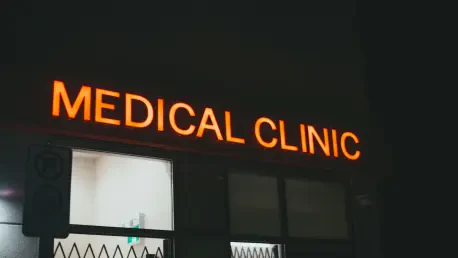New York’s Medicaid consumer-directed home care program (CDPAP) overhaul has sparked major concern for both elderly and disabled residents as well as their caregivers. Amidst this sweeping change, nearly 280,000 vulnerable residents are affected, and the health coverage of approximately 400,000 caregivers hangs in the balance. The state has engaged Personal Preference Program (PPL), a Georgia-based organization, to act as the single fiscal intermediary (FI), replacing numerous others that previously managed administrative duties. The focus is primarily on the insurance plans PPL provides to caregivers, which have been widely criticized for failing to provide adequate coverage and exploiting Affordable Care Act loopholes. These plans present challenges to caregivers, whose average annual earnings are roughly $32,000. The inadequate insurance coverage not only threatens financial stability but raises ethical questions about fair employment practices.
Challenges in Insurance Policies
Inadequate Coverage for Full-Time Caregivers
PPL’s offering of a “Minimum Value” insurance plan to full-time workers comes with financial implications that make it prohibitive for most. The monthly premium of $212 coupled with a $6,350 deductible each year places a significant burden on caregivers, who typically earn modest incomes. With such high out-of-pocket costs, this plan effectively bars access to essential medical services, exacerbating the financial strain on these workers. Despite the classification as a full-time plan, its unaffordability leads to a gap in medical coverage, impeding caregivers from safeguarding their health. This situation challenges the integrity of the state’s health insurance ambitions, questioning whether the goal is truly to support the health and well-being of these essential healthcare workers.
Misleading Offers for Part-Time Workers
The automatic imposition of the “Minimum Essential Coverage” plan on part-time workers further complicates the insurance landscape. While marketed as encompassing preventive services at no cost, this plan often results in diminished paychecks and insufficient care, excluding critical services such as hospitalizations or prescriptions. The inadvertent marketing of this plan as “free” is misleading, as it fails to cover pivotal healthcare needs, causing potential financial hardships for caregivers who are left underinsured. The misunderstanding regarding what qualifies as “essential” coverage needs urgent rectification to prevent exploitation and to ensure that caregivers receive equitable insurance options. The current model seems to exploit legal loopholes rather than genuinely providing for its workforce.
Implications for Caregivers
Disruption of Financial Stability
The consequences of these inadequate insurance policies extend beyond healthcare access, deeply impacting caregivers’ financial security. With the burden of high premiums and deductibles, many caregivers face the harsh choice between seeking necessary medical treatment and maintaining their economic stability. The state’s initiative inadvertently places caregivers in an untenable position by disqualifying them from affordable options they previously accessed due to their income levels. This shift potentially increases economic stress for caregivers who were accustomed to low-deductible plans such as New York’s Essential Plan, leading to declining wages and insufficient insurance coverage. The financial strain associated with PPL’s insurance offerings calls for an urgent intervention to prevent exacerbating poverty among low-income healthcare workers.
Misallocation of Resources
This upheaval in New York’s Medicaid system presents broader implications, particularly concerning the allocation of taxpayer funds. The attempt to centralize the fiscal intermediary to PPL promises efficiency but risks neglecting caregivers’ access to healthcare benefits, potentially misappropriating resources intended to enhance patient care. Governor Hochul’s assurances have yet to address these adverse outcomes, leaving many workers frustrated and underserved with resources misdirected from crucial care elements to insufficient insurance schemes. The decision to implement a single FI requires astute modifications to guarantee that Medicaid funds effectively prioritize patient care and do not inadvertently compromise caregivers’ rights. A reassessment of current policies could better align available funding with meaningful health outcomes for both Medicaid beneficiaries and their caregivers.
Future Outlook
Seeking Solutions
To address the myriad issues arising from this Medicaid overhaul, stakeholders and policymakers must consider innovative solutions. Suggestions have been proposed, such as prompting PPL to cease its health insurance offerings, redirecting those funds to enhance caregivers’ wages. Another approach involves delaying the insurance rollout for 90 days, allowing time to rethink viable alternatives that ensure adequate coverage. Such actions could mitigate some of the current challenges and create a more equitable system. The move to a centralized FI offers efficiency but requires careful balancing to uphold caregivers’ access to comprehensive healthcare insurance. Rationalizing these healthcare provisions is essential to ensure fairness and adequate protection for those delivering indispensable services.
Striving for Equitable Revisions
PPL’s “Minimum Value” insurance plan presents significant financial challenges for full-time employees. With a steep monthly premium of $212 and a daunting $6,350 annual deductible, this plan imposes an overwhelming fiscal burden on caregivers, who generally earn modest wages. The high out-of-pocket expenses further restrict access to necessary medical services, intensifying the financial pressure on these indispensable workers. Despite being labeled a full-time insurance plan, its prohibitive costs result in a substantial gap in medical coverage, compromising caregivers’ ability to maintain their health. This scenario raises concerns about the integrity and intention behind the state’s health insurance goals. Are the health and well-being of caregivers truly being prioritized, or is the system inadvertently hindering access to vital healthcare? Addressing these questions is crucial to ensuring that healthcare workers, who serve an essential role, have the support needed to thrive both physically and financially.









